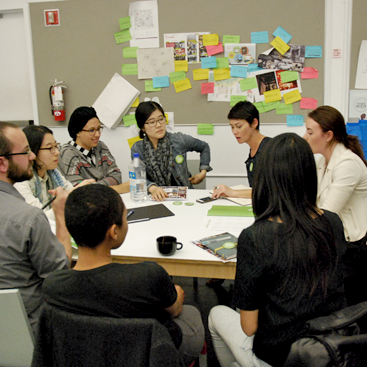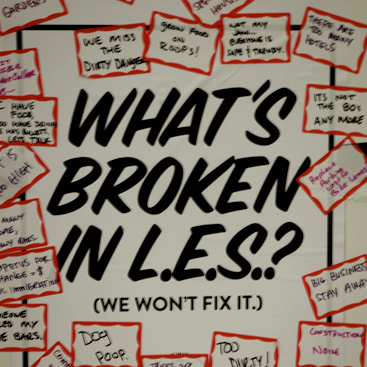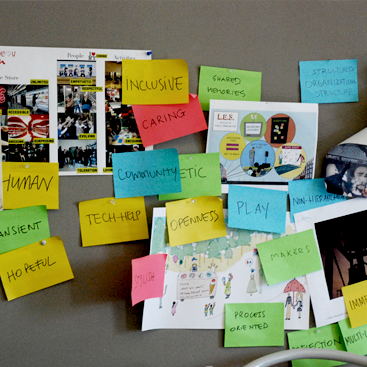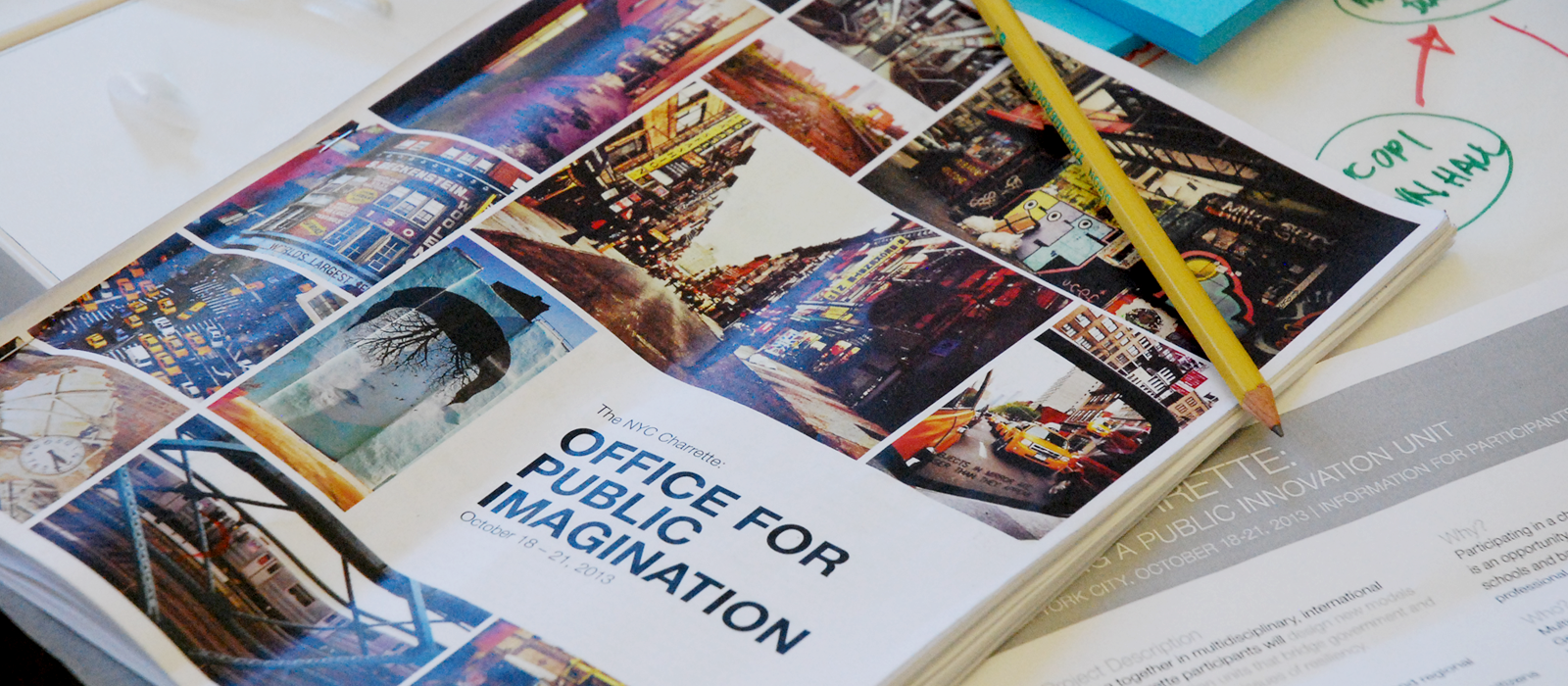Office for Public Imagination Charrette
Overview:
The IwB partnered with Parsons DESIS Lab and IIT College of Architecture for a three-day charrette in New York City to investigate new models for municipal and regional public innovation units. Four teams made up of IwB, Parsons, and IIT students, created proposals for different types of agencies that could intervene in local and regional problems making a more resilient New York City region.
__
What kind of agency could connect citizens, the private sector and public institutions to make the New York City and the Tri-state Region more resilient?
Goals:
To work collaboratively with teams from Chicago and New York and design a public innovation unit that works across municipal boundaries and is able to assess and address problems on a city and regional scale. Further, to use the 196 Stanton Street Storefront Gallery space, located in the Lower East Side in Manhattan, as a hypothetical test site for the public innovation unit.



Office for Public Imagination Charrette:
The IwB students, faculty and staff travelled to New York City in October 2013 for the Office for Public Imagination Charrette and the Municipal Art Society (MAS) Summit for New York City.
The three-day charrette was organized in partnership with the Parsons DESIS Lab’s MFA Transdisciplinary Design Program and the Illinois Institute of Technology’s College of Architecture. Four teams of students, together with expert advisors, investigated new models for municipal and regional public innovation units. The challenge was to design an agency that can work at a neighborhood level, but can also link municipalities, state and federal governments and the private sector to address problems that overlap municipal and state jurisdictions.
The charrette included a guest lecture from Debra Lam from Arup, who discussed the future of resiliency in urban centres. Students also met and were advised by experts from the NYC City Parks Foundation, Cannon Design, the Wagner School/ NYU, Citi Group and others.
With the help of dedicated and expert advisors, student teams were asked to incorporate the Storefront space at 196 Stanton Street in the Lower East Side as their agency’s headquarters. The teams’ proposed agencies are summarized below.
The IwB team attended the two-day 2013 MAS Summit for New York City on invitation by Mary Rowe, MAS director and conference organizing head. The summit is the MAS signature event designed to promote a meaningful dialogue about the future of NYC and other global cities around the world.
At the summit, IwB students and staff had the chance to participate in lectures with NYC, US and international leaders in urban development and design, like New York City commissioner Janette Sadik-Khan as well as scholars like Richard Sennett. The summit gave the IwB students and staff context for current and future urban development in NYC and its surrounding regions.
Charrette Results:
Table Lab “Put your ideas on the table” – TEAM BLUE
A public engagement bureau, Table Lab is a semi-governmental entity within the Mayor’s Office. As an innovative platform, the office will help residents to collect, discuss and prototype their ideas about what the neighborhoods could become, while helping the government to select and fund ideas as well. It will provide residents and public servants with skills, tools and space to facilitate their imaginations.
See the pdf presentation here.
Town Hall for the LES – TEAM GREEN
The Town Hall model provides the citizens with a set of adaptable tools to manage the effects of gentrification in the Lower East Side. The Town Hall is an agency that acts like a platform that can connect citizens, government, and private sector, working towards immediate, on the ground solutions, and long-term policy recommendations on the municipal and regional level. People from the community and various city departments can come together at the Town Hall. Community members share stories at the Town Hall, these dialogues are analyzed and synthesized for policy recommendations.
See the pdf presentation here.
The NYC Office for Public Imagination – TEAM GREY
The NYC Office for Public Imagination is an innovative, on-the-ground think-tank that focuses on multi-layered issues in the community. Its mission is to help resolve quality of life issues that negatively impact residents by research, then co-designing solutions with stakeholders. The agency institutes a new type of governance that is enhanced by local relationships. It makes resources and people from the public and private sector approachable. It aims to be the ‘middle ground’ between government and citizens, and to provide a platform for collaboration. Through this process, the agency will improve existing systems and services by proposing new points of intervention to improve city and neighbourhood efficiency. The first proposed pilot project for this agency would be a study on local noise reduction.
See the pdf presentation here.
The Public Goods Emporium – TEAM RED
The Public Goods Emporium is a branch of the Office of Public imagination that will utilize a satirical storefront and a series of boundary objects to draw in residents and engage them in thoughtful dialogue about the issues confronting their community. Additionally, the Storefront will contain various prompts asking customers to post their ideas around potential solutions to community problems. Finally, the Emporium will host regular workshops, facilitated with NGOs representatives and policy experts, to begin to build out interventions responding to some of the ideas generated in the storefront prompts.
See the pdf presentation here.
Project Credits:
2013-2014 IwB Cohort
IwB staff
Parsons, The New School staff, faculty, and students
Eduardo Staszowski
Lara Penin
Illinois Institute of Technology’s College of Architecture staff and students
Martin Felsen
Photo Credits:
Evelyne Au-Navoiz
Robert Giusti
Apostolo Zeno
Graeme Kondruss
Project Tags:
Toronto Charrette: Responsive Building, Chicago City Spaces Charrette
“Contemporary urban challenges cross municipal and state boundaries and often require city-region cooperation.”
– IwB, Regional Ecologies
